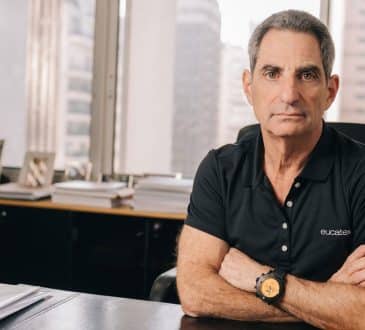Outdated Sales Teams and Methods: The Silent Margin Killer

In today’s rapidly accelerating business landscape, it’s not just products, services, or technologies that need constant updating and innovation. One of the most overlooked areas in many organizations is the sales model. Many CEOs, trapped by past success, are unwittingly leading their organizations into a margin crisis by allowing their sales teams to operate with outdated methods. Today’s unprepared and ill-equipped sellers are entering the sale at the worst possible time.
Fighting Yesterday’s War
Every CEO understands that the world of business is not static. Markets change, consumers evolve, and strategies need to be revisited. Despite this knowledge, many still employ sales techniques reminiscent of a bygone era. Remember, yesterday’s victories are no guarantee of tomorrow’s success.
Consider military tactics. Imagine a general trying to use World War I trench warfare strategies in modern combat situations. The results would be disastrous. In the same way, sales teams armed with old tools and strategies are walking into a battlefield that has changed entirely. The buying model has undergone a significant evolution. Gartner reports that 83% of the buying journey is over before buyers engage with B2B sellers; this is largely because so much information is readily available online, a phenomenon that has evolved over the years and will continue to accelerate thanks to AI technologies. Sales teams must recognize that the tools and techniques that guaranteed success a decade ago are not relevant today.
The New Buyer’s Journey
Sales teams are approaching the buying journey too late in the process and too low in the prospect organization. The digital age means that potential buyers no longer wait for a salesperson to introduce a product or service. They have done their research, read reviews, compared competitors, and often made up their mind before even contacting a company. By the time they reach out, they’re focused on price negotiations, and that’s quickly a race to the bottom as margins evaporate (see image).

This approach is flawed for two primary reasons:
It’s Reactive, not Proactive: When the sales team enters the scene late, they’re left playing catch-up, trying to sell features or benefits that the customer probably already knows. Instead, they should be in the frame from the outset, positioning the product, service, or solution, guiding the buyer’s journey, and ensuring that the conversation isn’t just about the price. Entering at the highest level in the organization, before the prospect has even started shopping for a solution, is one of the keys to success. Salespeople need to quickly move away from being transactional facilitators with buyers and instead establish themselves as trusted strategic advisors within prospect C-suites.
Eroding Margins: Revenue-driven sales might seem good on paper, but not if they’re chipping away at your margins. Just as humans struggle in low-oxygen environments, businesses start to suffocate as their margins shrink. The sales focus needs a seismic shift from revenue to margin. It’s not just about how much you sell, but at what margin. The later your sellers enter the sale, for example when the prospect is already shopping, the more margin compression you’ll encounter.
Creating Margin with a New Sales Approach
Success in the new sales landscape rests on three pillars: a better approach, better selling tools, and better skills.
Better Approach: Sales teams need to be part of the conversation early and engage at a higher decision-making level. By doing this, they’re not just selling, but consulting, understanding the prospect’s real threats, and tailoring solutions designed to mitigate their threats by focusing on the prospect’s priorities. Not only does this establish value early on, where today’s seller is more relevant and where you’ll find greater margins, it’s also the only way your sellers will gain access and time with a higher-level decision maker. You’re seeking to create a sale before the prospect has started shopping for a solution. This approach reduces the risk of the sale boiling down to mere price negotiation and the race to the bottom where margins disappear.
Better Tools: It’s not enough for sales professionals to rely solely on their interpersonal skills or product knowledge; they need superior selling tools to truly differentiate themselves. Every seller aspires to be involved earlier in the buying process and at a more strategic level. However, many are hamstrung by a lack of resources tailored to resonate with high-caliber, C-suite prospects. Traditional selling aids are often too generic or cater to lower-tier decision-makers. What’s truly needed are specialized tools—like pitch decks that tell a compelling narrative, diagnostics that pinpoint specific threats and solutions, and playbooks that guide interactions with top-tier executives. These resources are instrumental in not only securing that coveted high-level access but also in sustaining influence throughout the sales cycle. By arming your sales teams with these tailored tools, you empower them to rise above transactional engagements and foster meaningful, strategic partnerships.
Better Skills: This is about training and culture. Sales teams need to move from being product and solution focused to become much more aligned with the prospect’s true priorities; they must focus on the threats a prospect faces and position your real impact to confront those threats head-on. This is a different seller than the one who may have been successful in the past. Not only do these new skills need to be fully embraced, but they also require ongoing development and integration with the better approach and selling tools.
CEOs need to recognize that the world of selling has changed and continues to change, more rapidly tomorrow than today. Like any area of business, it requires revisiting, reevaluating, and disruptive reinventing. The cost of not doing so is not just lost sales, but eroding margins – the silent killer of today’s businesses. By focusing on the early high-level engagement of potential clients, equipping them with modern tools, and fostering a culture of continuous learning and priority-based selling, businesses can safeguard their margins and ensure continued relevance and vitality.
Written by Bryan Gray.
Have you read?
Highest-paid CEOs among Russell 3000 companies, 2023.
These Are the highest-paid CEOs among S&P 500 companies, 2023.
Ranked: The 50 Richest Celebrity Couples in the World, 2023.
The world’s wealthiest 300 cities, 2023.
Global Happiness Index: Happiest Countries In The World In 2023.
Bring the best of the CEOWORLD magazine's global journalism to audiences in the United States and around the world. - Add CEOWORLD magazine to your Google News feed.
Follow CEOWORLD magazine headlines on: Google News, LinkedIn, Twitter, and Facebook.
Copyright 2025 The CEOWORLD magazine. All rights reserved. This material (and any extract from it) must not be copied, redistributed or placed on any website, without CEOWORLD magazine' prior written consent. For media queries, please contact: info@ceoworld.biz











